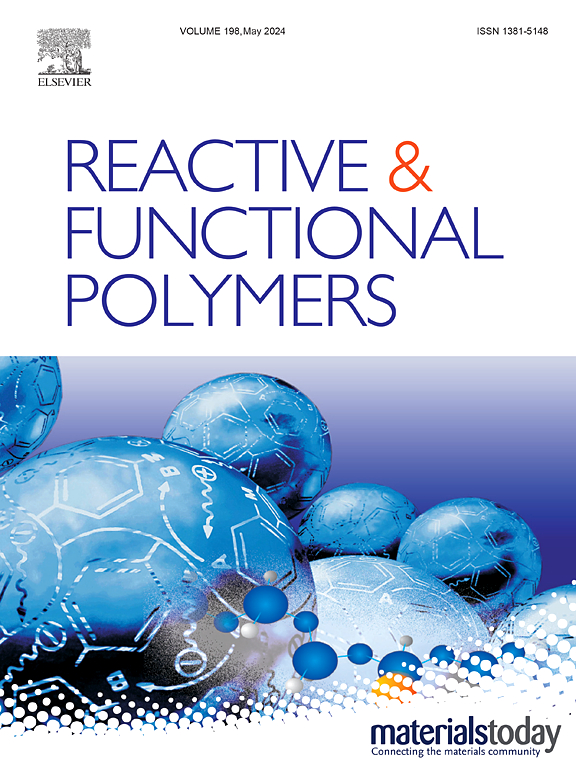Production of reusable and colorimetric cyanide sensor hydrogels for rapid detection of cyanide ions in various aqueous media
IF 4.5
3区 工程技术
Q1 CHEMISTRY, APPLIED
引用次数: 0
Abstract
In this study, a new type of (hemi)cyanine dye-derived HC-M monomer suitable for hydrogel synthesis by redox polymerization method was developed and characterized by various methods. The feature of HC-M monomer is that it changes color in the presence of CN− ions. Thus, when added to any hydrogel structure as a comonomer with covalent bonds, hydrogels that are highly sensitive to CN− ions and function colorimetrically can be produced. For this purpose, p(AAm-co-HCM) hydrogels were synthesized. The synthesized hydrogels were characterized by swelling tests, Fourier transform infrared spectroscopy (FTIR), and Scanning Electron Microscopy (SEM) analyses. The synthesized and characterized new type of monomer and p(AAm-co-HCM) hydrogels were used to detect CN− ions in various aqueous media and some liquid foods. For this, various concentrations of CN− in the range of 0.05–100 ppm were used. Thus, a new type of hydrogel structure was produced that qualitatively determines the presence of CN− in any aqueous environment by changing color in the time range of 1–660 min. It has been shown that the resulting hydrogels can be used as sensors many times, suitable for regeneration, thanks to their covalent bonds.

求助全文
约1分钟内获得全文
求助全文
来源期刊

Reactive & Functional Polymers
工程技术-高分子科学
CiteScore
8.90
自引率
5.90%
发文量
259
审稿时长
27 days
期刊介绍:
Reactive & Functional Polymers provides a forum to disseminate original ideas, concepts and developments in the science and technology of polymers with functional groups, which impart specific chemical reactivity or physical, chemical, structural, biological, and pharmacological functionality. The scope covers organic polymers, acting for instance as reagents, catalysts, templates, ion-exchangers, selective sorbents, chelating or antimicrobial agents, drug carriers, sensors, membranes, and hydrogels. This also includes reactive cross-linkable prepolymers and high-performance thermosetting polymers, natural or degradable polymers, conducting polymers, and porous polymers.
Original research articles must contain thorough molecular and material characterization data on synthesis of the above polymers in combination with their applications. Applications include but are not limited to catalysis, water or effluent treatment, separations and recovery, electronics and information storage, energy conversion, encapsulation, or adhesion.
 求助内容:
求助内容: 应助结果提醒方式:
应助结果提醒方式:


